My first introduction to Old Oakville took place in 2002, when I was on the organizing committee for the 2002 PYPS (Presbyterian Young People’s Society) weekend that was hosted at Knox Presbyterian Church Oakville. While I did most of my photography at that event inside the church, it wasn’t until 2010 that I started to explore the historic downtown from a photographic perspective. I had photographed events through the downtown, but my focus was on the events, not the people. I actually shot my last few rolls of Kodachrome through the downtown, mainly a roll of Kodachrome 25 and a roll of Kodachrome 40 Type A. The downtown has changed a lot in the thirteen years between those first rolls and now. It’s cleaner, lots of restoration and a tonne of boutique shops and fancy resteraunts. But it has always been a spot that is easy for me to drive down to shoot a roll and get back before my lunch break is up.

Minolta Maxxum 70 – Konica-Minolta Zoom AF 28-100mm 1:3.5-5.6 D – Arista EDU.Ultra 100 @ ASA-100 – Foma Fomadon LQN (1+14) 9:00 @ 20C (Constant Rotation)
The founding of Oakville is thanks to the natural harbour formed by the outlet of the Sixteen Mile Creek into Lake Ontario. The first name of the creek, niizhozaagiwan, in the language of the Anishinaabe and loosely translated to having two outlets, an apt descriptor because of the gravel bar that divided the outlet into two flows. The French would name the creek River de Gravois or Gravelly River. A series of treaties through the late 18th and early 19th centuries purchased vast swaths of land for colonisation by the British. The sub-division of Upper Canada was in districts, counties, and townships. Oakville is located within the historic Gore District (dissolved in 1857), Halton County (Renamed the Regional Municipality of Halton in 1975), and Trafalgar Township (dissolved in 1962). The land where the original city of Oakville now sits was not purchased until 1822 under Treaty 22 and officially designated Lot 11, Concession IV. The natural outlet made an excellent spot to establish a harbour, and the Sixteen Mile Creek offered a surplus of water power to drive mills, which in turn could serve various industrial and commercial interests. And young William Chisholm wanted a piece of that action. Chisholm applied several times to purchase the town plot but was denied several times. But a change of political alliance allowed him to successfully purchase the town plot for £1,029 or 3,517$ (Canadian) in 2022. Chisholm, while still tied to his properties in Nelson Township, assigned his son Robert and son-in-law Merrick to begin the survey of the land in 1829. The original townsite was bordered by the modern streets of Rebecca/Reynolds to the north, Allan to the east and Brock to the west. It wasn’t until 1833 that town lots were sold on the condition that a frame, brick or stone house be erected. William retained ownership of the land surrounding the harbour, including a beautiful piece that overlooked the harbour mouth. The mouth was dredged out, and docks and piers were constructed. And then a shipyard was completed. Chisholm also completed a sawmill to reduce the rich timber resources into usable lumber for ship construction and trade. The community centred around the intersection of Navy & Colborne (Lakeshore today). When the postal service arrived in 1835, the name Oakville was officially given to the community. The community also began an official port of entry and a significant player in the grain trade. The shipyard, mills, tannery, and distillery were all additional commercial players in the early community. Various faith communities formed through the downtown core, with all denominations being represented, although the Methodist congregation of St. John’s is the oldest. And while William Chisholm would die before seeing the town he helped found grow and succeed, his family continued to be major players in the early growth of Oakville. When Oakville was incorporated as a town in 1857, William’s son George was elected the first town mayor; the same year, the railway came through the north of the central part of the town. There were highs and lows, and industries shifted and changed through the second half of the 19th century, with the grain trade collapsing and fruit growing taking its place. A major fire destroyed the largest kerosene manufacturing plant and set the creek on fire. By 1871 the population reached 1,000, and the first major expansion took place in 1913 with the Brantwood Survey opening up land north of the original community. Ford of Canada set up its headquarters and a major automotive plant post-war. It would be absorbed into the town of Oakville in 1962 and all the smaller communities throughout the Trafalgar Township. Today the population sits at 240,000, and it is the largest town in the Province of Ontario.
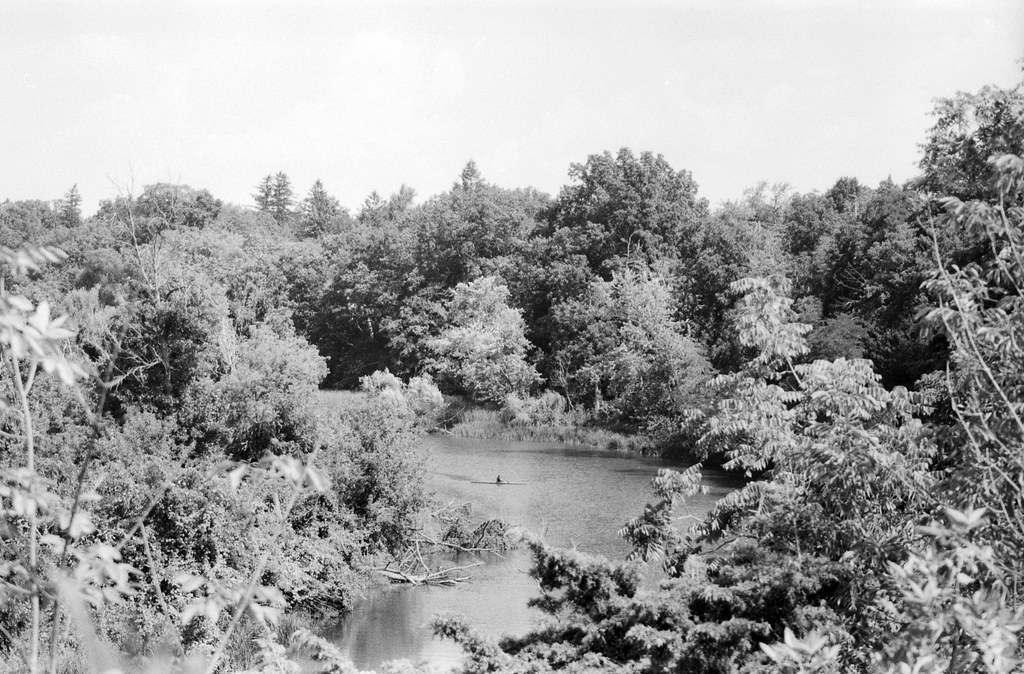
Minolta Maxxum 70 – Konica-Minolta Zoom AF 28-100mm 1:3.5-5.6 D – Arista EDU.Ultra 100 @ ASA-100 – Foma Fomadon LQN (1+14) 9:00 @ 20C (Constant Rotation)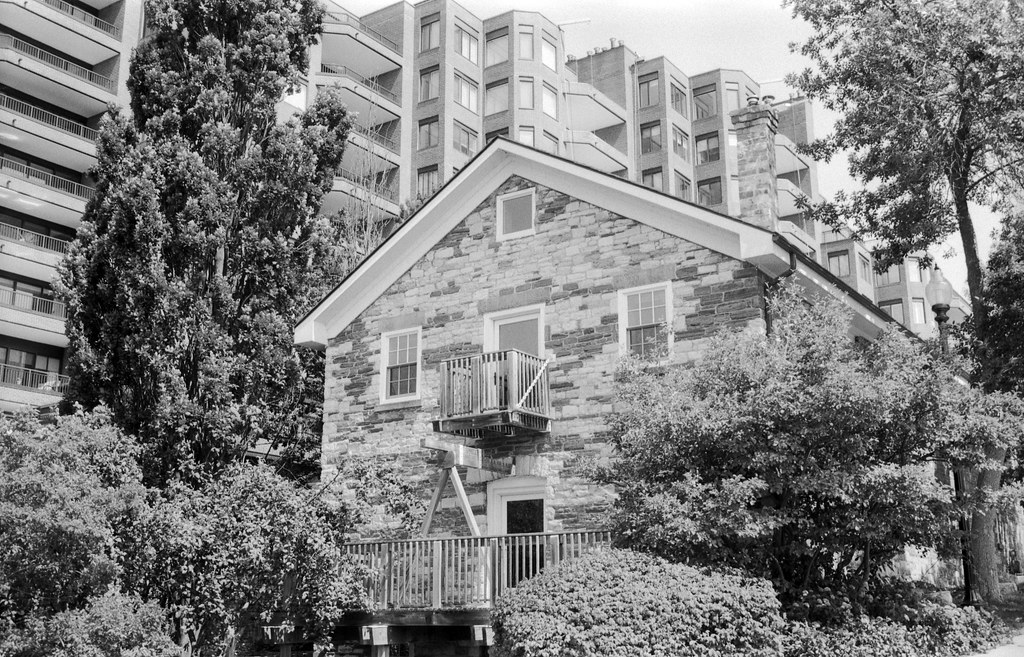
Minolta Maxxum 70 – Konica-Minolta Zoom AF 28-100mm 1:3.5-5.6 D – Arista EDU.Ultra 100 @ ASA-100 – Foma Fomadon LQN (1+14) 9:00 @ 20C (Constant Rotation)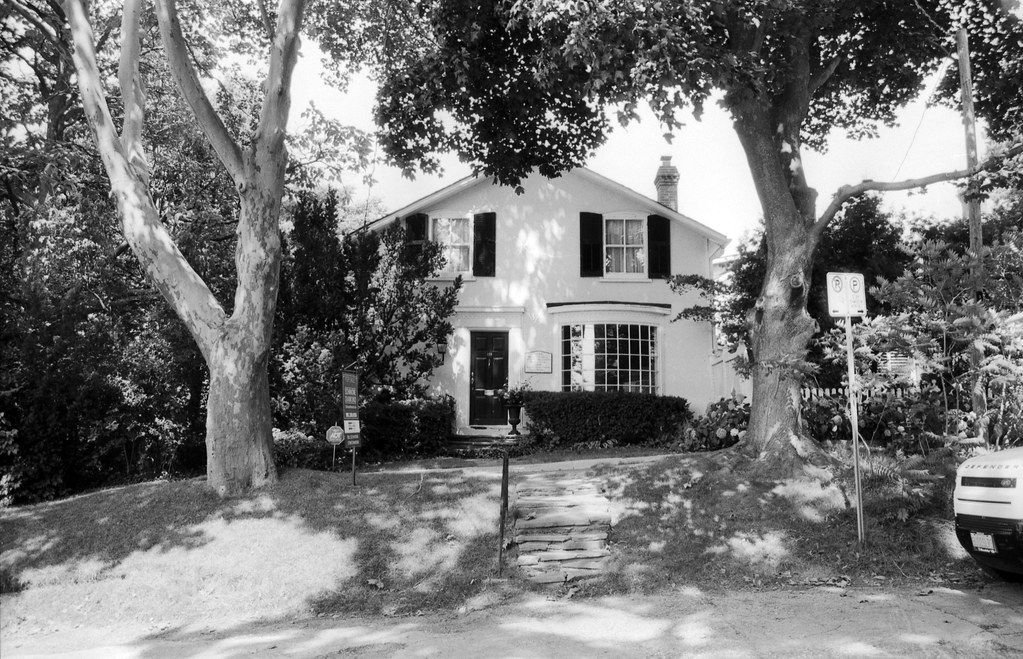
Minolta Maxxum 70 – Konica-Minolta Zoom AF 28-100mm 1:3.5-5.6 D – Arista EDU.Ultra 100 @ ASA-100 – Foma Fomadon LQN (1+14) 9:00 @ 20C (Constant Rotation)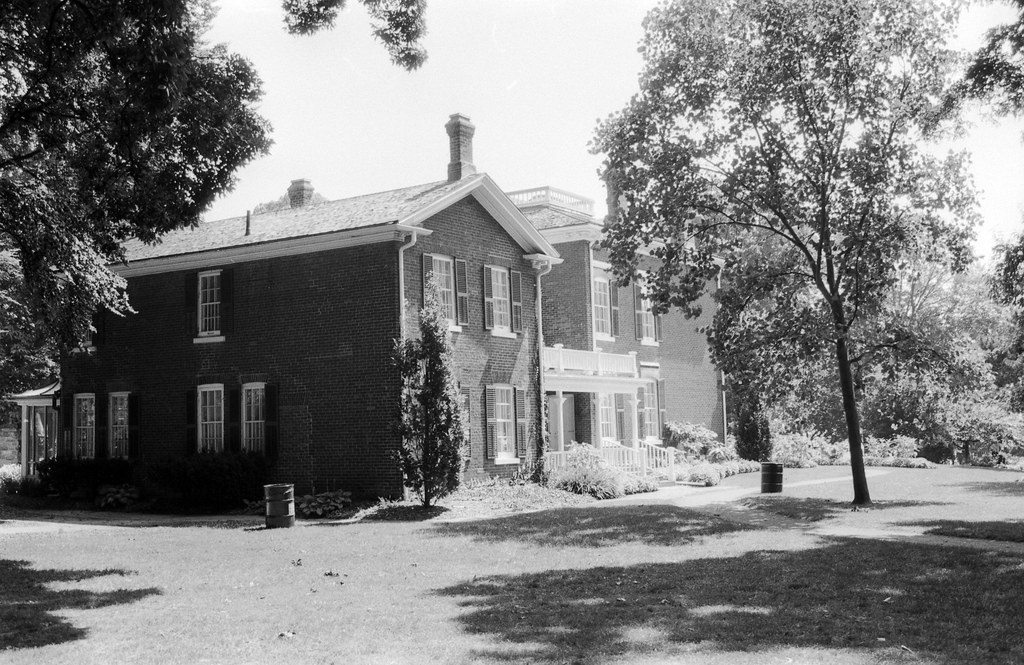
Minolta Maxxum 70 – Konica-Minolta Zoom AF 28-100mm 1:3.5-5.6 D – Arista EDU.Ultra 100 @ ASA-100 – Foma Fomadon LQN (1+14) 9:00 @ 20C (Constant Rotation)
When you photograph in a space a lot you go in with a set shot list, I did that with this month’s roll. And I quickly realised that to fully capture a lot of the amazing historical buildings a roll of twenty-five exposures is not enough! I started off in George’s Square, outside the downtown and one of the oldest public parks in Oakville and headed out in a loop through the downtown, to where the Sixteen Mile creek exits into Lake Ontario then through the residential sections of the Old Town. I went with buildings that I knew the stories for and are among my favourites. And it was still hard to pick the images to include in the post, because I scanned all but a single image from the roll of twenty-five this time around. But that’s what happens when you’re careful about your choices and when to press and when not to press the shutter button.

Minolta Maxxum 70 – Konica-Minolta Zoom AF 28-100mm 1:3.5-5.6 D – Arista EDU.Ultra 100 @ ASA-100 – Foma Fomadon LQN (1+14) 9:00 @ 20C (Constant Rotation)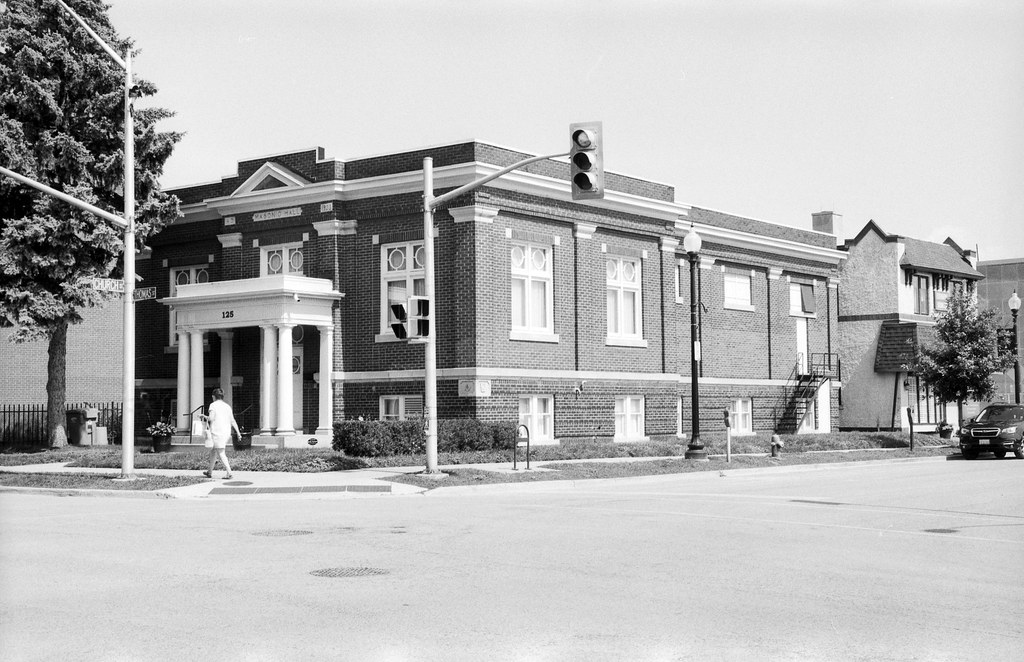
Minolta Maxxum 70 – Konica-Minolta Zoom AF 28-100mm 1:3.5-5.6 D – Arista EDU.Ultra 100 @ ASA-100 – Foma Fomadon LQN (1+14) 9:00 @ 20C (Constant Rotation)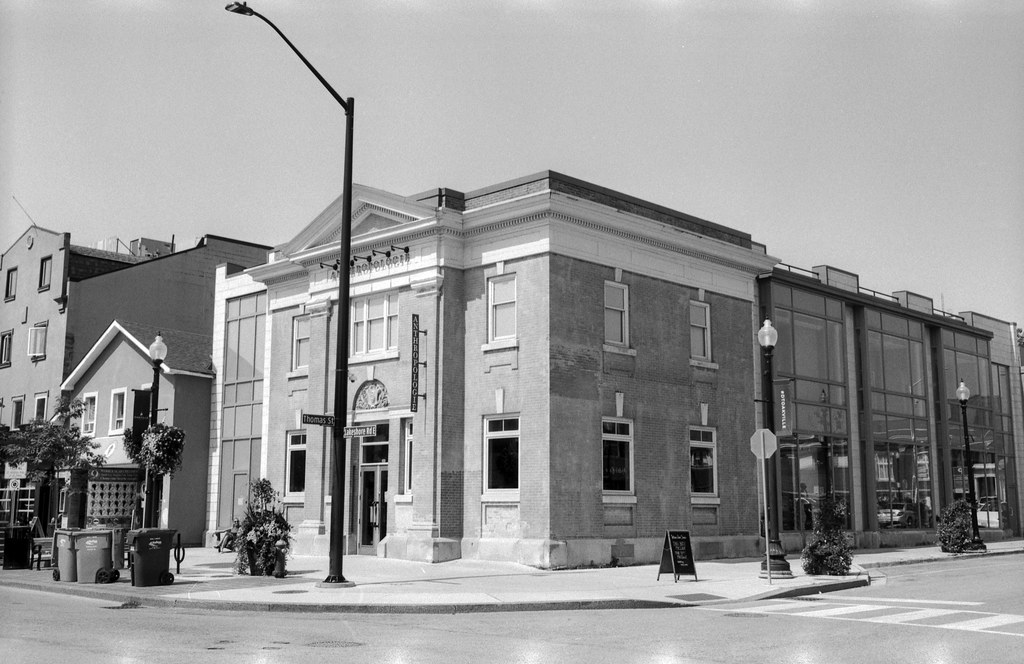
Minolta Maxxum 70 – Konica-Minolta Zoom AF 28-100mm 1:3.5-5.6 D – Arista EDU.Ultra 100 @ ASA-100 – Foma Fomadon LQN (1+14) 9:00 @ 20C (Constant Rotation)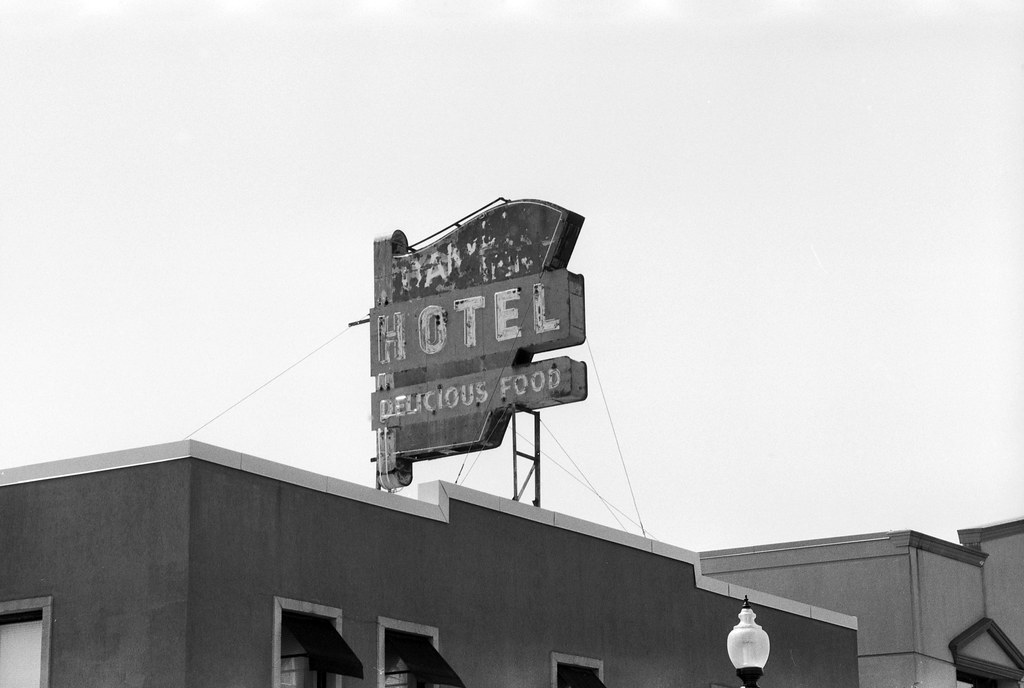
Minolta Maxxum 70 – Konica-Minolta Zoom AF 28-100mm 1:3.5-5.6 D – Arista EDU.Ultra 100 @ ASA-100 – Foma Fomadon LQN (1+14) 9:00 @ 20C (Constant Rotation)
I went with my usual setup for this month, the 28-100mm lens and did not filter the lens because the light was difused due to a thin cloud cover. I exposed the film at the box speed of ASA-100, and developed the film in Fomadon LQN. LQN is one of two liquid developers created by Foma and is designed to work best with the three core Foma films, 100, 200 and 400. While you would usually go with a dilution of 1+10, I decided to test the film using the more economical 1+14 dilution and increased the development time by 1.5 times, then reduced by 10% to account for developing the film with constant rotation. And the results are spectacular, they are rather contrasty, but it was a hard light day when I was out shooting. I think in these situations a yellow filter would have improved the film greatly and added some sky separation.

Minolta Maxxum 70 – Konica-Minolta Zoom AF 28-100mm 1:3.5-5.6 D – Arista EDU.Ultra 100 @ ASA-100 – Foma Fomadon LQN (1+14) 9:00 @ 20C (Constant Rotation)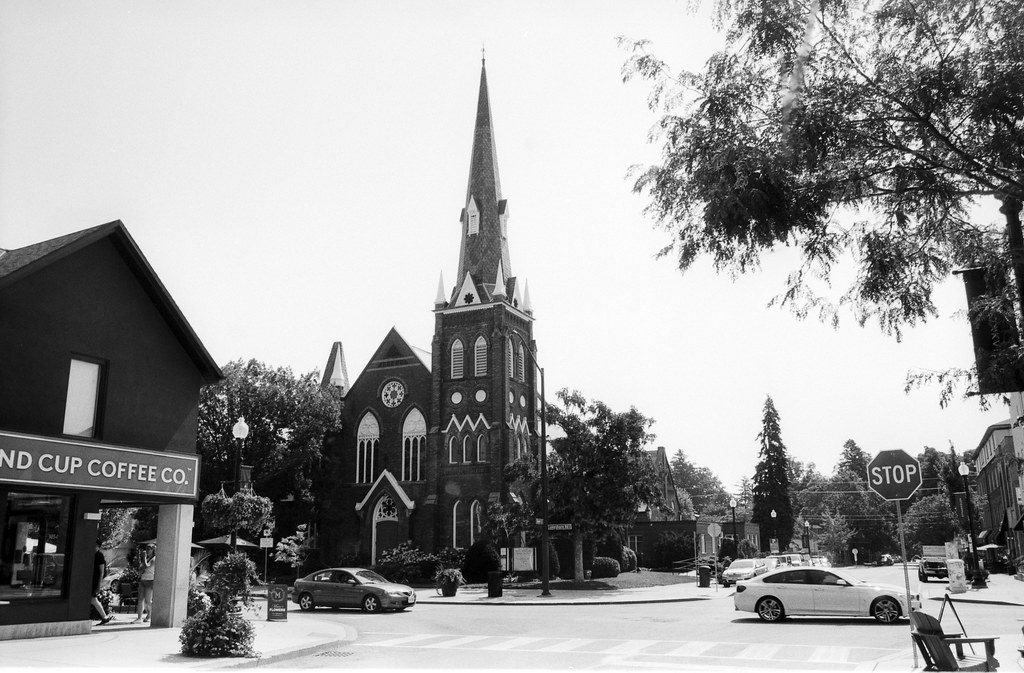
Minolta Maxxum 70 – Konica-Minolta Zoom AF 28-100mm 1:3.5-5.6 D – Arista EDU.Ultra 100 @ ASA-100 – Foma Fomadon LQN (1+14) 9:00 @ 20C (Constant Rotation)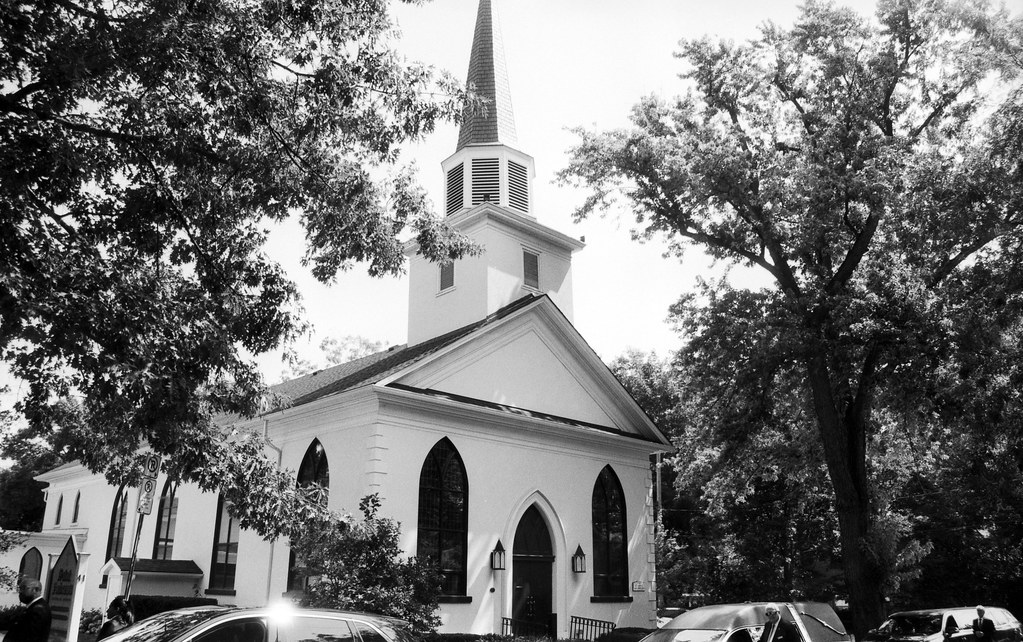
Minolta Maxxum 70 – Konica-Minolta Zoom AF 28-100mm 1:3.5-5.6 D – Arista EDU.Ultra 100 @ ASA-100 – Foma Fomadon LQN (1+14) 9:00 @ 20C (Constant Rotation)
Minolta Maxxum 70 – Konica-Minolta Zoom AF 28-100mm 1:3.5-5.6 D – Arista EDU.Ultra 100 @ ASA-100 – Foma Fomadon LQN (1+14) 9:00 @ 20C (Constant Rotation)
There is more to Oakville than just the original section, and it is worth exploring many of the former villages that make up the modern town. Plus a tonne of extra areas that are part of the old town, but outside the historic settlement. Kerr village is starting to see some revival, there’s the beautiful historic harbour of Bronte. Plus a trip down into Lion’s valley offers a unique view of what Oakville looked like before humans made any major moved into urbanization. Plus the remains of Postville, Munn’s Corners, and Palermo. I’ve been exploring more of Oakville’s history in an ongoing project through the rest of this year. Next month I’ll be doing something a little different by shooting for a specific theme, rather than a location, and poking around the backsides of buildings.